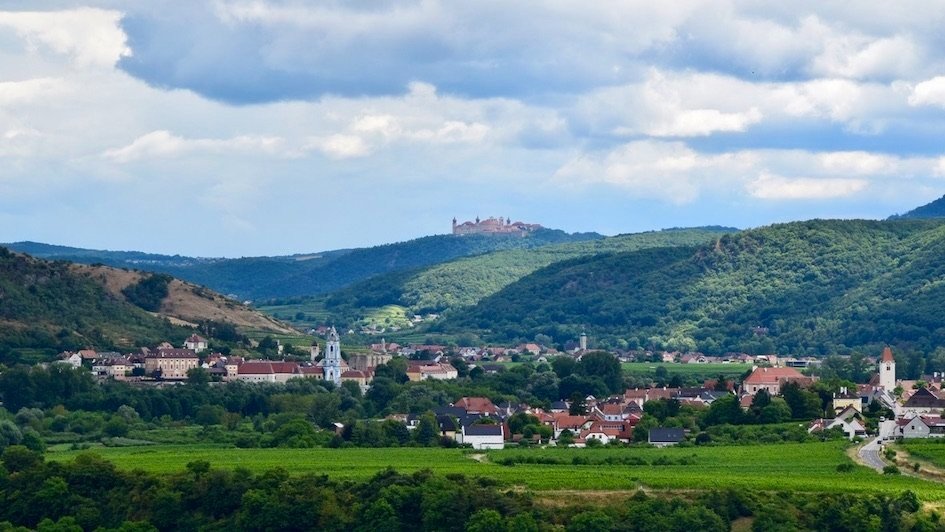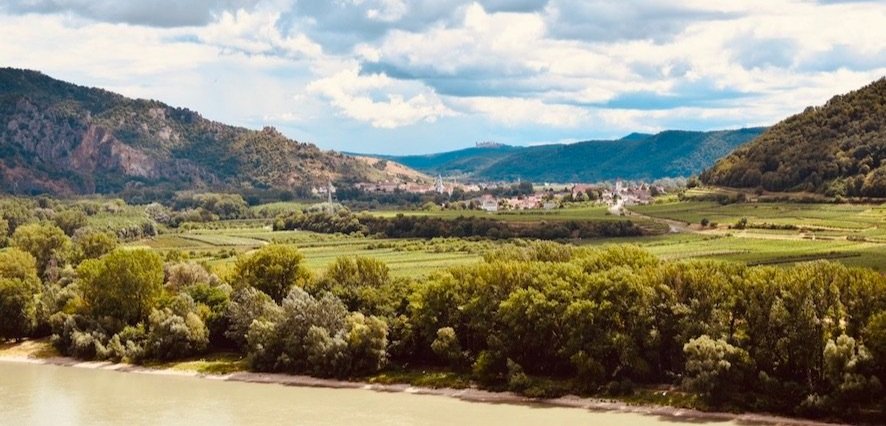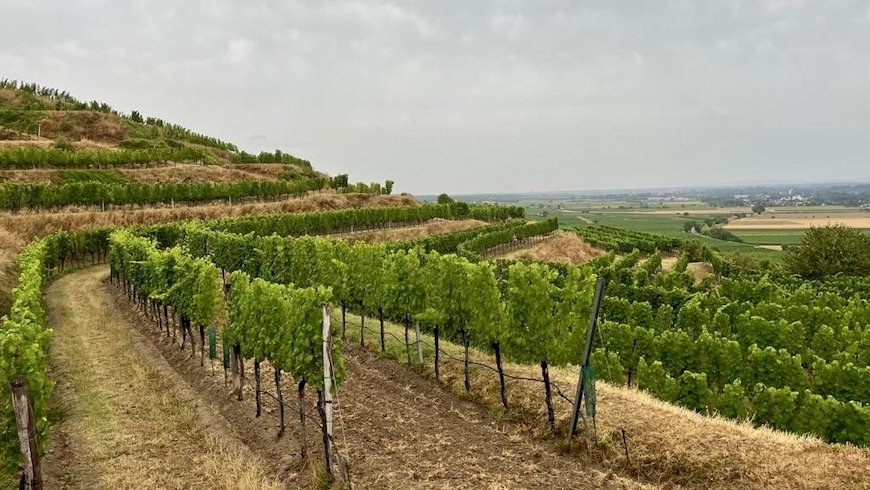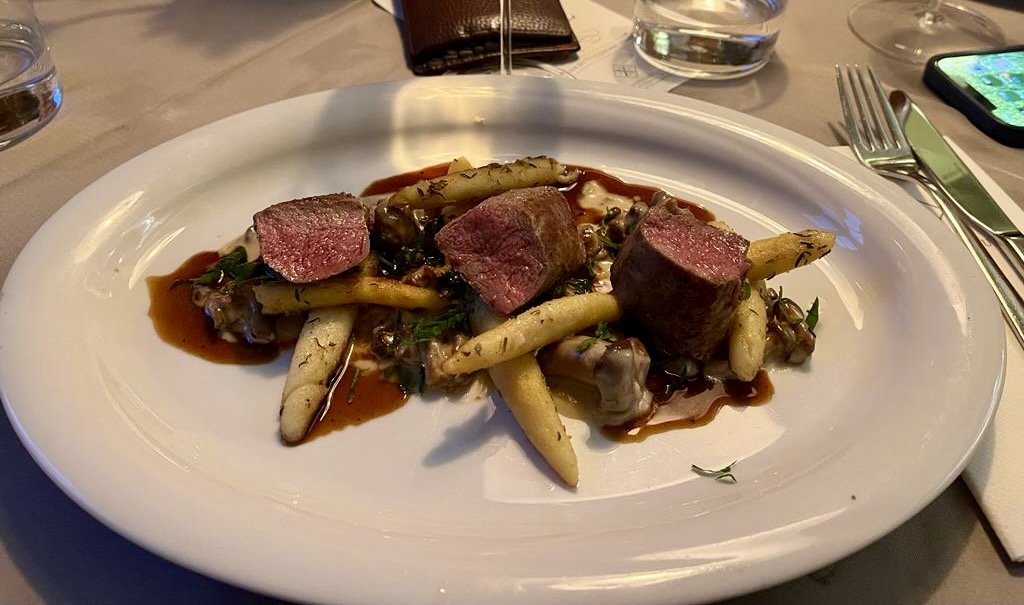AUSTRIA’S NIEDERÖSTERREICH WINE REGION (LOWER AUSTRIA)

Dürnstein in the Wachau Valley and Stift Göttweig:
Source: Winekeller
Our wine travel experiences in Austria’s Niederösterreich wine region:
Austria’s Niederösterreich wine region: an introduction
Niederösterreich - or ‘Lower Austria’ - is the country’s largest wine region and probably its most well known and visited. It is made up of eight distinct ‘DACs’ (Districtus Austriae Controllatus), with separately defined, strict wine classifications and produces a large range of different wines and different wine styles, based on local grape varieties as well as international varieties.
The general quality of wines from this vast wine-growing region is excellent.
Lower Austria is a popular wine tourism destination, with its excellent wines, stunning scenery, fascinating history and historic landmarks, its laidback lifestyle and its proximity to the capital Vienna.
Niederösterreich wines
Lower Austria map:
The huge ‘Lower Austria’ wine region is made up of 3 core ‘climate areas’, consisting of:
The Weinviertel, north of Vienna - Austria’s largest wine region;
The Danube region and its tributary valleys to the west of Vienna;
Niederösterreich, with its Pannonian climate, in the south-east.
There are between 25 and 30,000 hectares under vine in the Niederösterreich or Lower Austria wine region.
The traditional Austrian grape, white Grüner Veltliner, thrives here, especially in the Danube region, where some amazing wines are produced, many of which age incredibly well. Riesling is also grown incredibly successfully here, mainly on the higher, steeper slopes.
The regional appellation is known as ‘Niederösterreich’. See below a description of Lower Austria’s sub-regions and the 8 different DACs:

Looking over the River Danube towards Dürnstein and Stift Göttweig monastery
Source: Winekeller
Weinviertel:
The Weinviertel region, with its wooded hills and rolling countryside, produces Austria’s freshest and lightest wines and is known for its peppery Grüner veltliner wines (the Weinviertel DAC is Grüner veltliner). It also produces however some excellent, fruity reds and a selection of sweet wines.
The Danube region:
West of Vienna lies some incredibly beautiful wine villages along the majestic River Danube and along its tributaries, the Krems, Traisen and Kamp rivers. Here Riesling and Grüner veltliner are the flagship varieties and they are typically expressed through these world-famous DACs: Wachau DAC, Kremstal DAC, Kamptal DAC, Traisental DAC and Wagram DAC.
The Wachau Valley is undoubtedly Austria’s most famous wine region - made up of an 18 miles stretch of steeply terraced, vine-covered hillsides along the majestic River Danube, nestled between the historic towns of Krems and Melk - and known for its ‘Wachau Grüner Veltliner’ and ‘Wachau Riesling’. The twin towns of Stein and Krems mark the eastern end of the Wachau wine region and the beginning of Kremstal, which produces wines of a similar style and quality. The Kamptal region, especially on the Heiligenstein mountain, produces some very distinctive and outstanding Kamptal wines. Slightly warmer than the Wachau region, it also produces some excellent Grüner Veltliner and Riesling wines, along with other varieties including Pinot blanc and Chardonnay..
Traisental produces some excellent Grüner veltliner wines, but the unrelated, red-skinned Roter veltliner has also become preeminent here. Ditto for Wagram wines.
Niederösterreich:
Niederösterreich is home to some of Austria’s best red wines, but regionally typical white wines are produced here too.
The Carnuntum wines include whites Grüner veltliner, Chardonnay and Pinot blanc and reds Blaufränkisch and Zweigelt. Thermenregion, the most southerly and warmest sub-region in Niederösterreich was the last Austrian region to be awarded DAC status in 2023 and can be applied to both its red and white wines.
Weinviertel vineyards
Vineyards outside Dürnstein
The Heiligenstein, Kamptal
Carnuntum region
Niederösterreich - Lower Austria - Travel guide and other useful information
Places to visit and things to do and see in Lower Austria:
Lower Austria is a popular holiday and tourism destination. In the heart of Europe and Austria’s historic heartland, it boasts a rich cultural heritage and an incomparable variety of landscapes, with fertile forests, pastures, lakes, river valleys, hills, gorges, quaint towns and villages - and of course the scenic beauty of the beautiful River Danube.
A tour of Lower Austria is relatively simple to plan, within easy reach of the country’s capital city and international airport and you can enjoy a huge variety of landscapes and wines across the different wine sub-regions.
Whether you enjoy hiking, nature, cycling, or perhaps in the winter, snow sports, Lower Austria offers lots for those who love the great outdoors. If art and culture is more your thing, there is lots to see and do, including visiting world-famous abbeys and monasteries and UNESCO World Heritage Sites - the Wachau Valley from Krems to Melk being one of them!
Top sights:
There are some beautiful cities, towns and villages to visit in Lower Austria - perhaps top of the list is the stunning Benedictine Melk Abbey, a UNESCO World Cultural Heritage sites towering over the city of Melk below.
Krems an der Donau - the 5th largest town in Lower Austria and nestled between the Wachau and Kremstal wine regions - is also very much worth visiting and offers lots of options for enjoying some art and culture. The Lower Austrian state capital of St. Pölten is known for its lively bar scene and great shopping!
We also love the famous town of Dürnstein, in the heart of the Wachau region, with its ruined castle high above the shimmering Danube, famous for once housing Richard the Lionheart as a prisoner and its baroque blue and white steeple, familiar to many from all of those TV commercials promoting European river cruises!
Visiting Melk Abbey by bike!
Krems an der Donau
Dürnstein on the Danube
St. Pölten
Lower Austrian gastronomy and food culture:
Lower Austria is a superb destination for any wine and food enthusiast and there are lots of excellent restaurants and wine taverns - ‘Heuriger’ - where you can sample all of the regional, traditional dishes.
Eating and drinking in a local ‘Heuriger’ is a huge part of the culture in Lower Austria and its where you can really experience traditional foods and hospitality! A Heuriger is basically an inn or tavern where a wine-grower opens its doors to offer its latest wines - so not only do you get to enjoy some fabulous wine, you get to enjoy delicious home-cooked food too! Some only offer cold plates of foods - normally various cheeses, meats and breads - this is called ‘Buschenschank’.
Local dishes feature a wide variety of protein and carb dishes, including all sorts of meat, game and fish dishes, accompanied with dumplings - ‘knödel’ - or ‘spätzle’ (a kind of egg noodle). You will find on most menus the traditional ‘wiener schnitzel’ and lots of different cured meats. Look out also for the fantastic bread rolls - ‘Wachauer Laberl’.
Lower Austria however is also very much known for its spectacular desserts as well as its pastries and cakes, including of course the famous Viennese ‘sachertorte’ (divine chocolate cake)! Make space for apricot dumplings or ‘marillenknödel’, ‘palatschinken’ (Viennese-style dessert crepes or pancakes that are traditionally filled with apricot jam) and ‘cremeschnitte’ (a puff pastry cream slice)! Apricots are a common theme - featuring the locally grown Wachau apricots - and you will see them in the form of desserts, jams and liqueurs.
(The dishes below are care of Wachauerstube in Unterloiben)
Visit here for more information and inspiration about visiting Lower Austria!
Wiener Schnitzel and potato salad
Venison and spätzle
Marillenknödel - apricot dumplings
Traditional Wachauer Laberl bread rolls





















Kremstal may not be as well known as its neighbouring Austrian wine region, the Wachau Valley, however this classic wine region produces some of the best Austrian white wines - we uncover Kremstal and share our winery and wine hotel recommendations…